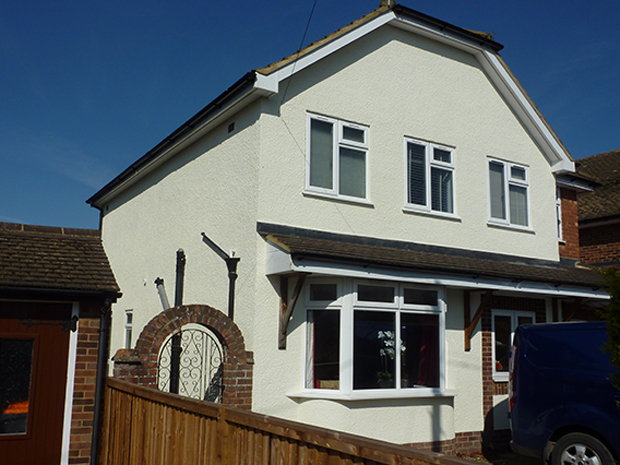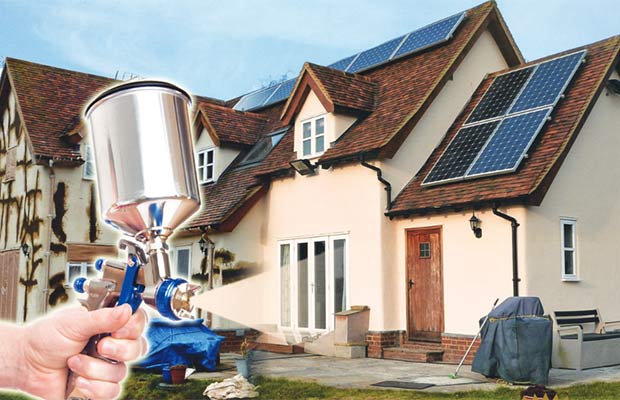Table of Content
If you reside in a house including an unpainted brickwork exterior and are thinking about getting it painted, you should know that after you paint a brick-based exterior, you can’t go back and change your decision; it’s done and done! The trouble is that once you’ve painted brick with masonry paint, you’ll have to go through it again every few years, or it’ll start to look bad. Wall coating helps to solve this problem.
Here’s how to do it!
Using resin-based exterior paint, we can change a has-been into a must-have!
Even if you are an expert at painting brick houses, attempting to paint brickwork faced houses with standard exterior wall paint will result in major complications.
Because of the state of the walls and the permeability of the bricks, regular masonry paint would’ve been sucked into the bricks, producing a patchwork appearance.
It would not look very good even if you put coat on coat of standard masonry paint.
Not only that, but before any painting could be done, the bricks of the house needed to be repaired, as did the reinstatement of numerous places of loose mortar joints that had worn and fallen away with time, allowing rainfall to seep inside and cause dampness.
Nothing lasts a lifetime, especially if exposed to the elements, so choose paint to last when looking for a house painting quote.

resin based coating
How did we go about renovating any house?
House painting crews complete the following tasks:
- Power wash the walls to get rid of any loose debris.
- Replace the faces of bricks that had been eroded and damaged by frost.
- Around the bricks, loose pointing mortar joints have to be removed and restored.
- Cover the doors and windows with masking tape and place dust sheets on the floor.
- A waterproof primer then has to be hand-applied.
- Further, the chosen masonry coating has to be sprayed quite thickly.
- Allow drying before removing the masking and cleaning the area.
As you can see, there is a lot more to be done with each property than just a lick of paint, and you can also notice that there is a need to take great care not to cause a mess, which includes respect for your neighbour’s home.
If you live in a semi-detached or terraced home, always be certain of the fact that no mess gets into your neighbour’s home.
The advantages of having a wall coating installed in your home.
As you may have noticed, renowned house painting crews go to great lengths to ensure that your property receives the highest quality workmanship and materials.
All work is guaranteed by a 20-year warranty backed by insurance with most of these service providers for your peace of mind.
Top service providers of wall coating will not only transform your house, but they will also ensure that the paint finish on the walls will not need to be repainted or repaired for at least 20 years. In fact, we know of cases where the coating has lasted nearly 30 years without repainting, so a 20-year warranty is conservative, to say the least.
Benefits of using a Resin Wall Coating
Ready-to-use wall putty with an acrylic binder base and coloured ceramic grains, high water repellency, and great abrasion resistance; this is what you get from a resin wall coating.
All of the advantages stated below are available with the Resin wall coating range in the market.
- It’s ready to use.
- Suitable for both internal and external use
- Resistant to water
- Multiple colours available that are abrasion resistant
Why are Coloured Resin Wall Coatings better than their other alternatives?
Coloured Resin wall coatings are indicated for the decoration of substrates in their external or internal environments on any existing or newer residential, commercial, or industrial buildings. These are highly recommended for being used on cured substrates, i.e. after a curing time of a minimum of four weeks, it is easily applicable over the substrates, including lime or lime / cement-based plasters, thermal plasters, reinforced skim coats while choosing the cycles of restoration of the facades having hairline cracks, concrete, and several other prefabricated structures.

wall coating
- Better Abrasion Resistance: The Resin solutions also have a good abrasion resistance due to their composition, including a ceramic grain foundation.
- Weather resistance: Resin wall coating’s unique formulation offers comprehensive protection from atmospheric elements, resulting in an unbroken skin that resists rainfall penetration and keeps walls dry.
- Workability: The coating’s thixotropy, combined with its outstanding fluidity and adherence to the substrate, results in minimal material detachment during application.
- Higher and better aesthetic effects: Resin wall coatings provide mono and pluricromatic finishes with significant visual impact thanks to the precise mixing of ceramic grains of diverse colouration.
Conclusion
The thickness of wall coatings is often many times that of conventional masonry paint. Because of this increased fortification, they are better suited to withstand buffeting rain and wind. They are also laced with a variety of chemicals that greatly increase their resilience, as they are designed for both longevity and aesthetics. From silicon infusion, which increases the water resistance of wall coatings, to the pliolite technique, which improves the adhesion of wall coatings to the surface they are binding to, there are a variety of techniques available. A higher level of adhesion is especially advantageous in uncertain harsh weather.

